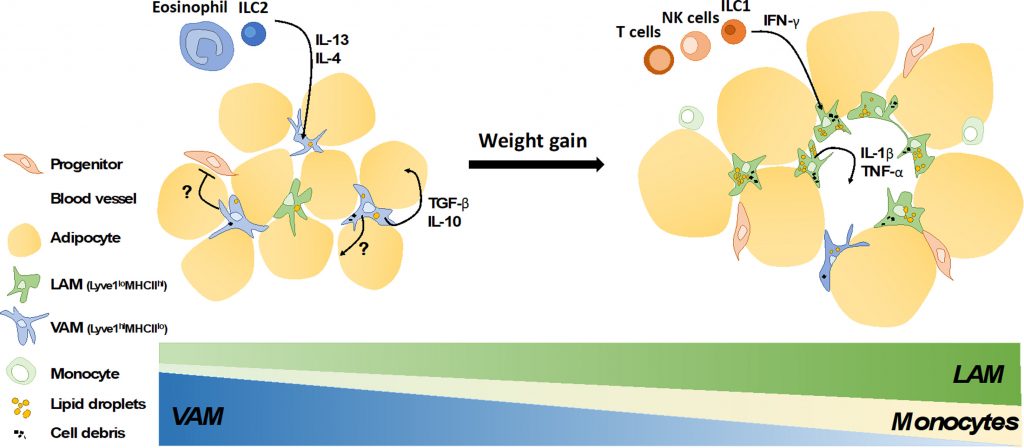Understanding the heterogeneity and functions of metabolic tissue macrophages
Growing evidence places tissue-resident macrophages as essential gatekeepers of metabolic organ homeostasis, including the adipose tissue and the pancreatic islets. Therein, macrophages may adopt specific phenotypes and ensure local functions. Recent advances in single cell genomic analyses provide a comprehensive map of adipose tissue macrophage subsets and their potential roles are now better apprehended. Whether they are beneficial or detrimental, macrophages overall contribute to the proper adipose tissue expansion under steady state and during obesity. By contrast, macrophages residing inside pancreatic islets, which may exert fundamental functions to fine tune insulin secretion, have only started to attract attention and their cellular heterogeneity remains to be established. The present review will focus on the latest findings exploring the phenotype and the properties of macrophages in adipose tissue and pancreatic islets, questioning early beliefs and future perspectives in the field of immunometabolism.

To read the full paper, head to the following link:
https://www.sciencedirect.com/science/article/pii/S1084952121002378?via%3Dihub#fig0005





